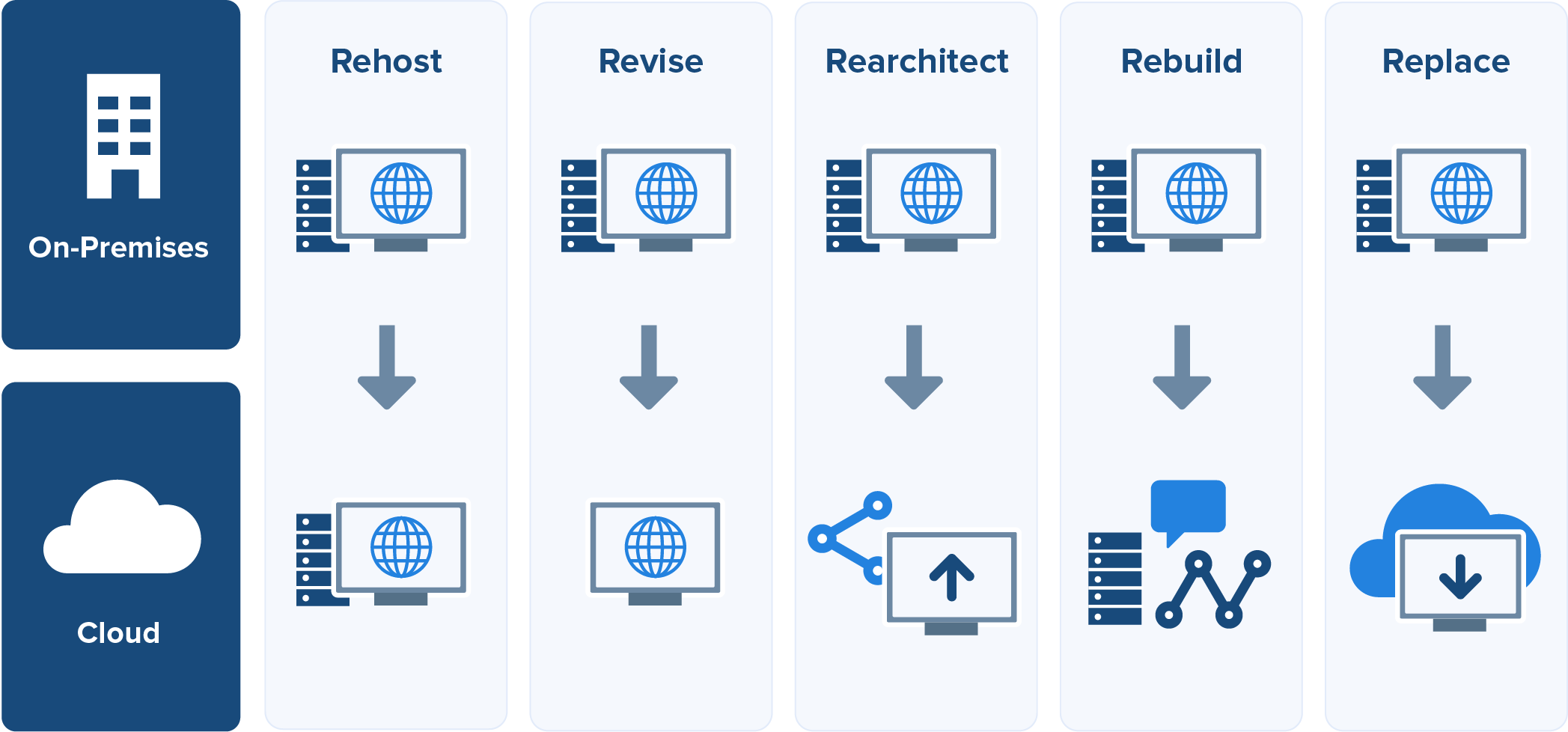Rehost
We work on rehosting for 20% of our customer projects. Rehosting can easily be explained as "relocation" from A to B. For most people a first introduction to public cloud providers.
Existing hosting and hosted applications are often hosted by local parties. Levarne helps your organization pick up and transfer these applications to a modern infrastructure. This infrastructure is already equipped with modern security, where the emphasis is not on machines and power contracts but on availability of the software.
Levarne does not recreate the application. We move the existing application within the client's landscape to a new environment, on a public cloud provider. Think of AWS / Google Cloud or Azure. For each migration we make a project plan based on a weekly schedule with fixed, measurable and verifiable deliverables.
If a cloud strategy is chosen for existing applications, we distinguish two types of applications. The first type is an application, often a monolithic application, that is hosted by a local hosting party. This custom application can be developed over several years. The mobile experience on such an application is often the reason for change. The second type can run within the walls of your own data center or a recently migrated application for cost savings or infrastructure improvements, for example. This refers to the security, requirements for GDPR or even more simply improved hardware for the server and storage.
That's not what Levarne means by cloud migration. For Levarne, roughly five types of migrations are possible when we talk about cloud migration. We distinguish Rehosting, Revise, Rearchitect, Rebuild and Replace. For Levarne, a migration is therefore not just moving data. We use public cloud providers, large organizations that everyone knows, AWS, Microsoft Azure and Google Cloud platform. Of course, more parties can be appointed such as Alibaba, IBM or Oracle. However, these are less prominent and lag behind in techniques as is customary in the current DevOps landscape.
If a cloud strategy is chosen for existing applications, we distinguish two types of applications. The first type is an application, often a monolithic application, that is hosted by a local hosting party. This custom application can be developed over several years. The mobile experience on such an application is often the reason for change. The second type can run within the walls of your own data center or a recently migrated application for cost savings or infrastructure improvements, for example. This refers to the security, requirements for GDPR or even more simply improved hardware for the server and storage.
That's not what Levarne means by cloud migration. For Levarne, roughly five types of migrations are possible when we talk about cloud migration. We distinguish Rehosting, Revise, Rearchitect, Rebuild and Replace. For Levarne, a migration is therefore not just moving data. We use public cloud providers, large organizations that everyone knows, AWS, Microsoft Azure and Google Cloud platform. Of course, more parties can be appointed such as Alibaba, IBM or Oracle. However, these are less prominent and lag behind in techniques as is customary in the current DevOps landscape.


We work on rehosting for 20% of our customer projects. Rehosting can easily be explained as "relocation" from A to B. For most people a first introduction to public cloud providers.
10% of our original customers uses a hybrid form, so rearchitect the application from hosting to serverless.
70% opt for a rebuild. An existing application, often with monolithic features, is reconstructed and improved. Almost 100% of these rebuilds are dedicated to modern web progressive applications, so scalable for modern phones and other mobile devices. The rebuild is often supplemented with replace projects, in which malfunctioning and changed user flows are replaced in modern workflows; fewer screens, fewer click-throughs and faster responses with integrations to multiple communication tools.